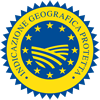Description
The Mirabelles de Lorraine PGI are plums cloned from Mirabelle de Nancy and Mirabelle de Metz varieties.
Production Area
The production area of Mirabelles de Lorraine PGI includes the Meuse, Meurthe-et-Moselle, Moselle and Vosges departments, in the Lorraine region.
Production Method
Harvest period lasts six weeks, from mid August to September, and from October to August. Producers must constantly take care of harvesting, cleaning the fruits, pruning the trees and carrying out new sowing.
Appearance and Flavour
Mirabelles de Lorraine PGI are small and fragile fruits, with a round shape, yellow or golden when ripe, with a minimum diameter of 22 mm. Its skin is thin and firm, its perfume is light and its scent is delicate, with strong fruity flavour that make them unique. When the plum is fully ripe, it detaches immediately from the tree. This can take place twice.
History
The origins of Mirabelles de Lorraine PGI are ancient, their name comes from Latin and it means "beautiful to see". This particular type of plum was widely expanded in the Lorraine area, at the end of the 1970s, it was almost extinguished. In the 1980s, a group of farmers decided to save this cultivation which represented a territory identity and they managed to recover the product until it became an important economic resource of the area.
Gastronomy
The Mirabelles de Lorraine PGI are consumed fresh. They are extremely perishable, however they can be stored frozen, since they do not loose their characteristics, even if, once they are frozen, they blacken. They can be also preserved in sugar syrup, in liquor or according to the Lorraine traditional recipe, with vinegar, stored with pepper grains; to be combined with pork salted meat and cheese. They are ideal to prepare jelly and jams, to fill tarts and cakes, also used to seasoned meat and fish dishes.
Marketing
The product is sold as Mirabelles de Lorraine PGI. It is marketed fresh or prepared, in jams, or stored with liquor or syrups.
Distinctive Features
Mirabelles de Lorraine PGI are tightly related to territory and tradition. Native trees, of selected quality, are the ones selected to be planted, but also the most resistant ones and those with more fruits. This orchards ecosystem has allowed preserving the Lorraine territory.






